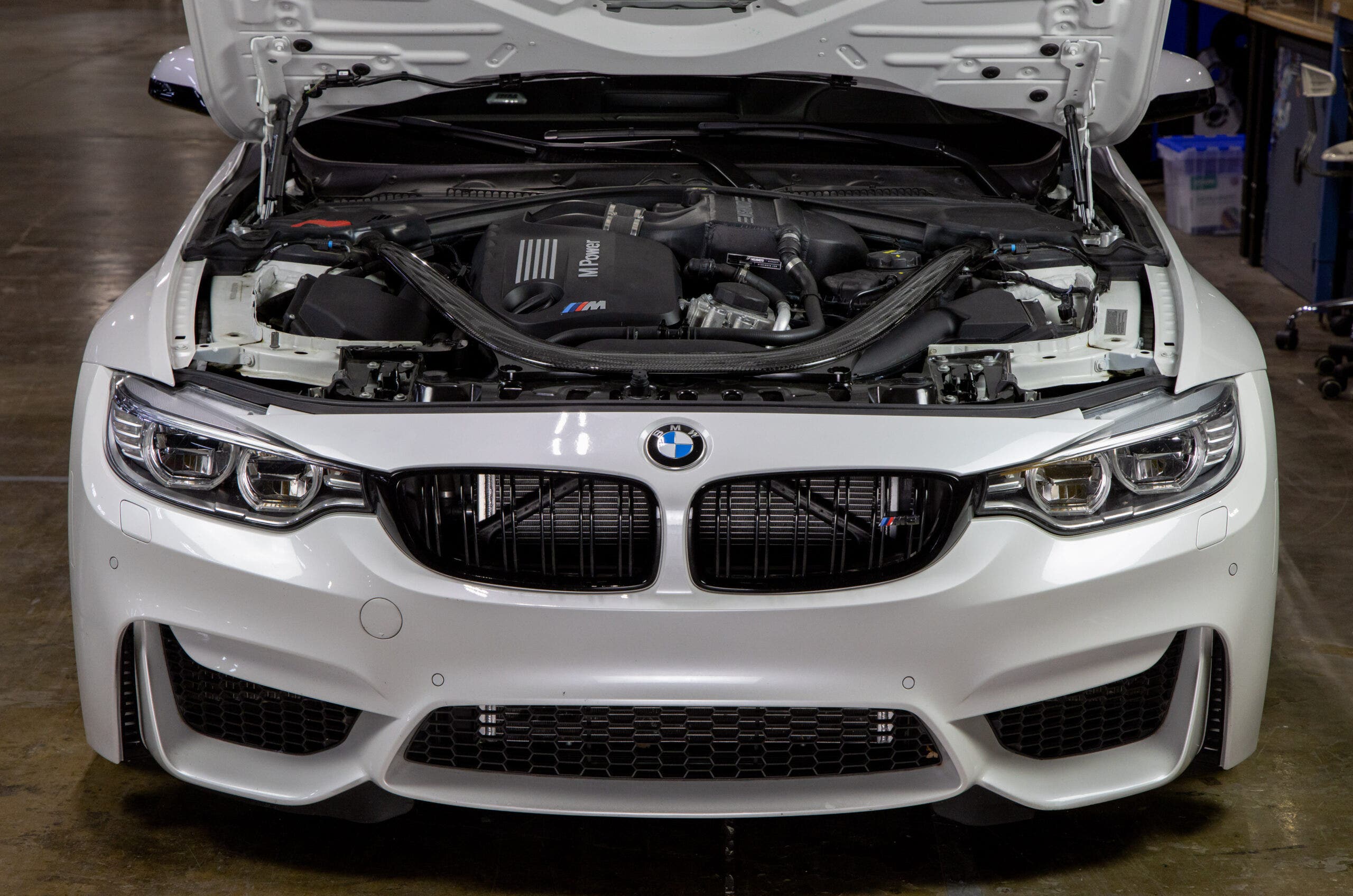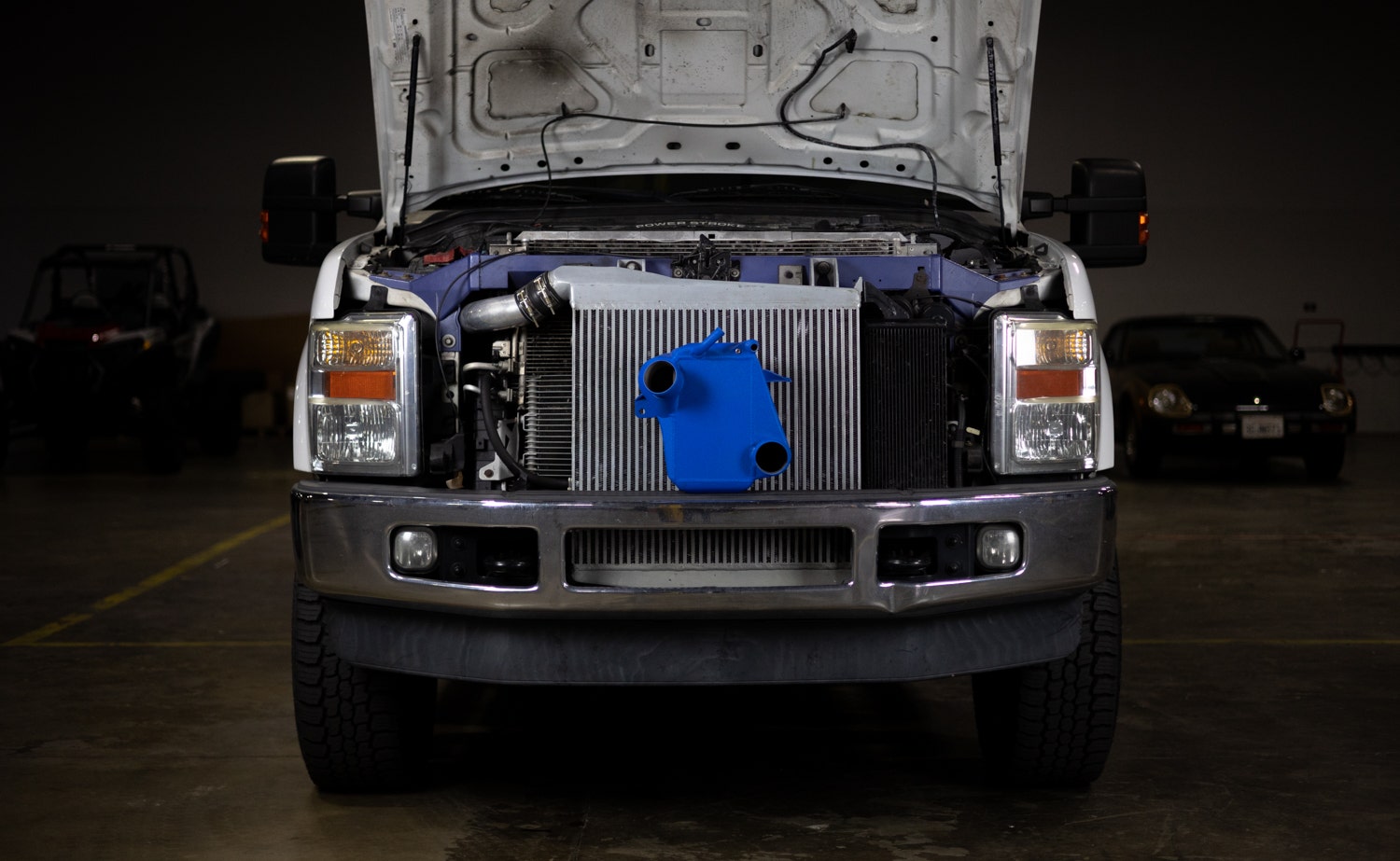
A Tale of Two Systems - Intercooling System Overview - Air-to-Water vs. Air-to-Air Intercoolers
Turbo and supercharging have been crucial in modern automotive performance. These induction add-ons help your small displacement 4-cylinder punch above its weight class or help your monstrous V8 achieve ludicrous speed. In any case, the process of forced induction heats your charged air, which is less than ideal for keeping your performance machine, well, performing. Intercooling systems have long been implemented to mitigate this issue, but as these systems evolve, things can get a little convoluted, which is why we're here! Let's dig in.
To start, we need to understand the fundamentals of how a forced induction system works and why that leads to hot intake temps. Your turbo or supercharger is, in essence, an air compressor. The concept behind forced induction is to cram more air into your intake system than the ambient air pressure allows. Naturally aspirated engines are limited to the atmospheric pressure of the current environment, whereas adding a turbo or supercharger to the mix can increase the air pressure entering the intake system via compression, more commonly known as boost in the automotive world. This boost pressure provides a more oxygen-rich mixture in the cylinders that allows more fuel to be injected and promotes better combustion, which, in turn, gives your engine some more pep in its step.
The trouble is compression causes this air to heat up, and the hotter charged air is less oxygen-rich and less dense than cooler air, producing a less efficient burn during the engine's power stroke. In addition, if the charge air becomes too hot, the ECU may also reduce the ignition timing advance, leading to less power. Luckily, intake air temperatures drop when you add an intercooler into the mix, and, in this day and age, there are two main methods of intercooling.
Air-to-Air
Air-to-air intercooling is the simplest and most common method of cooling charge air. This method utilizes a heat exchanger mounted in between the turbo or supercharger, and uses ambient air to cool your engine's charged air. The intercooler in this system is mounted directly in the path of fresh air, typically at the front of the vehicle, or under an application-specific vent or scoop, like the WRX or Mazdaspeed3. The air-to-air intercooler typically has first dibs on the fresh air stream and employs a piping system to channel the charged air from the turbo through the intercooler and into the intake manifold.
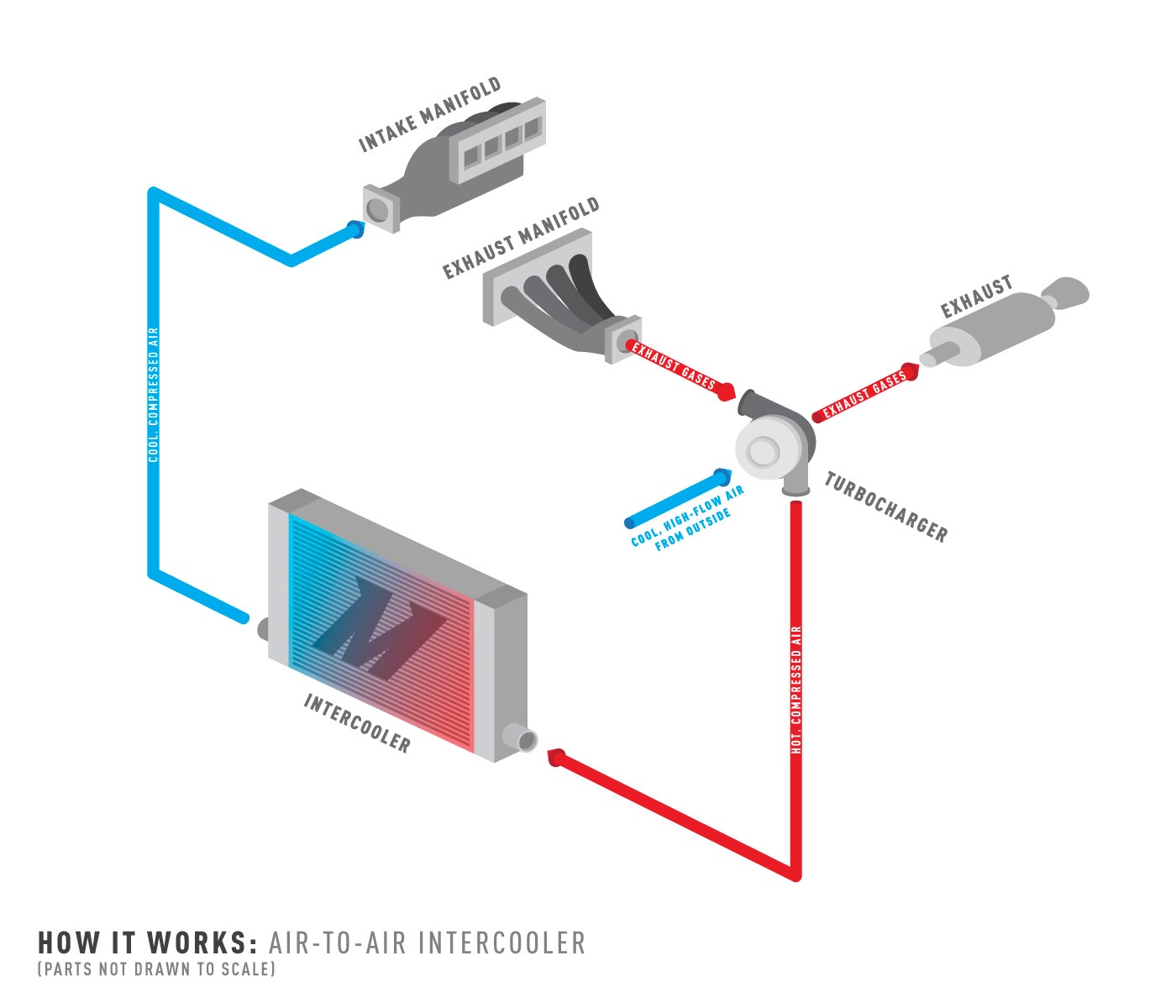
The upside to an air-to-air system is its simplicity. It's a tried-and-true system that's plenty effective at maintaining charge air temperatures on economy and performance vehicles alike. The simplicity of this system lends itself to the enthusiast community as well since it makes for a more straightforward upgrade. Most OEM intercoolers use tube-and-fin cores with restrictive piping that are good enough for daily driving but become a choke point for tuned and big turbo vehicles. With intercooler construction and design updates, along with larger intercooler piping, air-to-air systems are more than capable of handling high-horsepower vehicles. For more insight on intercooler construction and how it affects performance, make sure you head over to our in-depth intercooler selection guide: Drop Intake Temperatures. Drop Track Times. Drop Jaws. The Ultimate Guide for Intercooler Selection
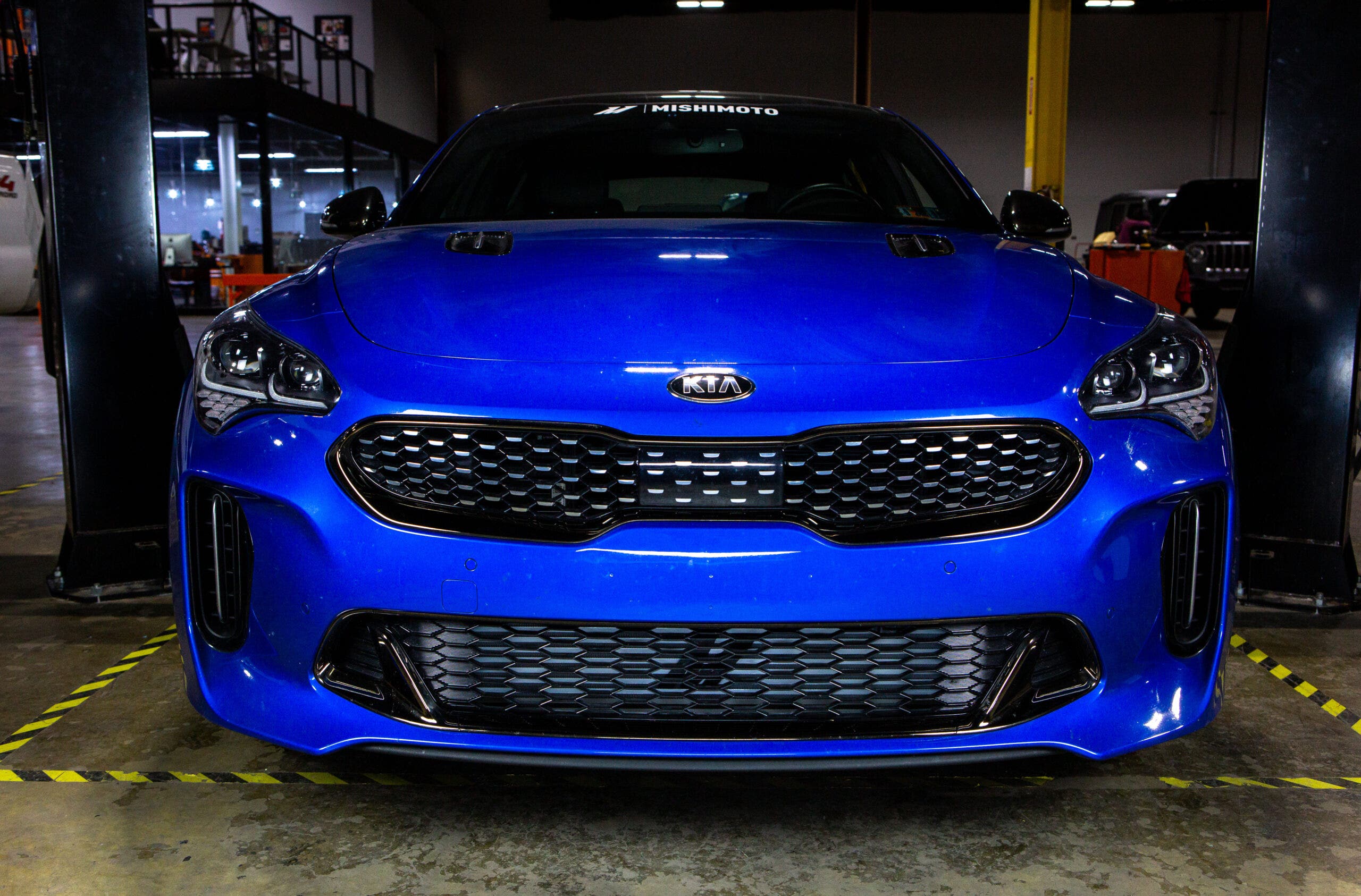
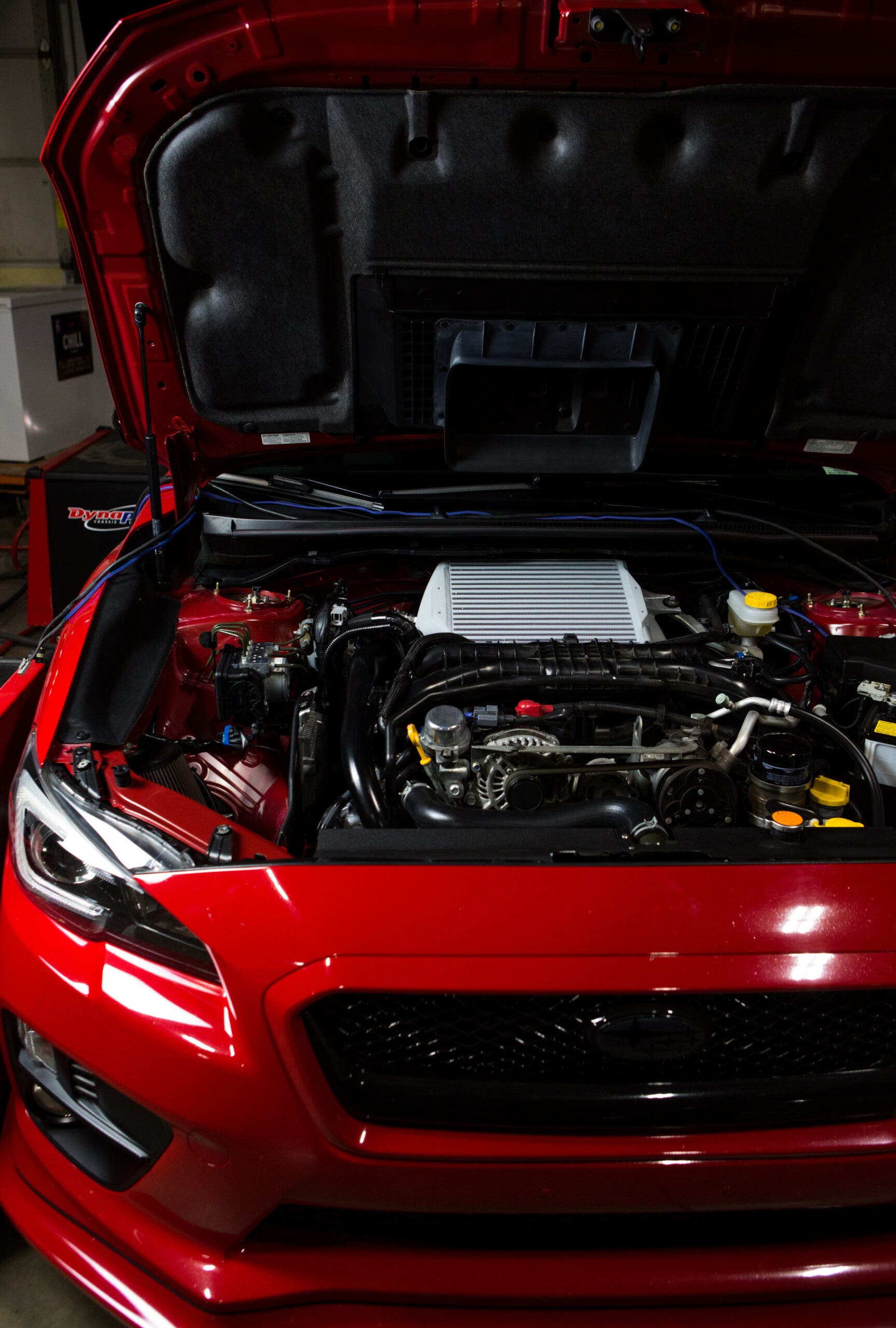
While air-to-air systems have plenty of pros, there are drawbacks. The most notable of those drawbacks is heat soak. Since this intercooler style relies on a flow of fresh air, anytime the vehicle is idling or moving at slow speeds, the intercooler's efficiency is significantly reduced, especially when it comes to OEM and tube-and-fin style cores. Heavy-duty bar-and-plate cores mitigate this issue, but in some cases, these larger intercoolers can impede airflow to other critical systems like the primary radiator. Getting the vehicle rolling is ideal for reducing heat soak with either tube-and-fin or bar-and-plate intercoolers. In addition, the air-to-air intercooling system's reliance on longer sections of piping and larger cores can result in increased turbo lag as there's now more volume in the system for the compressor to fill.
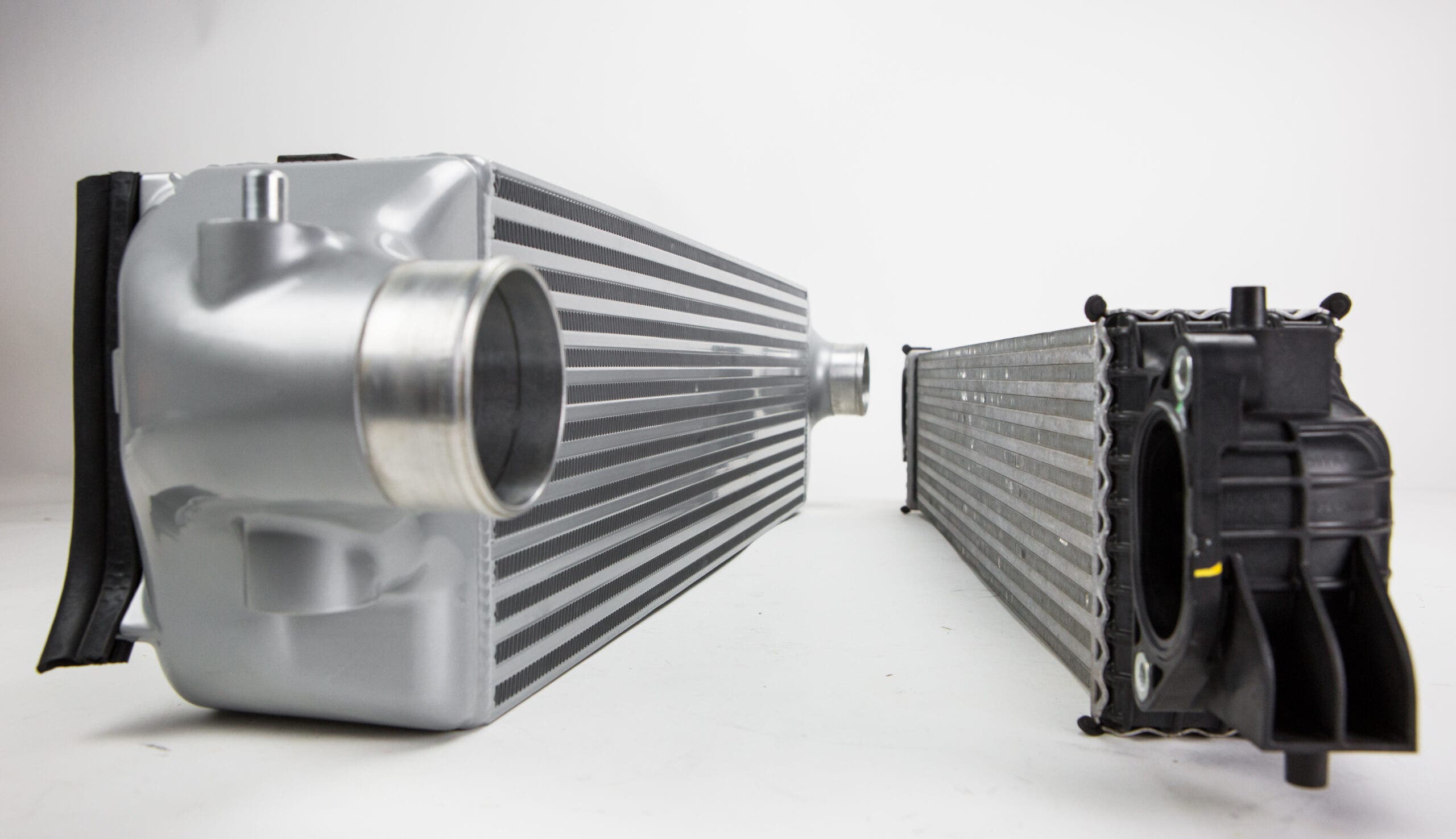
Air-to-Water
Air-to-water systems are where things get a little more complex. Initially reserved for super high-horsepower performance vehicles, these intercooling systems have trickled down and permeated into a much wider range of vehicles, including the A90 Supra, just about every modern performance-oriented BMW, Infiniti's Q50/60 and plenty more.
The idea behind this intricate system is simple: water has a much higher thermal capacity and conductivity than air. Simply put, water is much more effective at extracting heat from the charged air than air is. This trait means that the intercooler cores are just as effective as their air-to-air counterparts at only a fraction of the size. The caveat to the shrinking core size is that these intercoolers require a complete secondary coolant system to function.
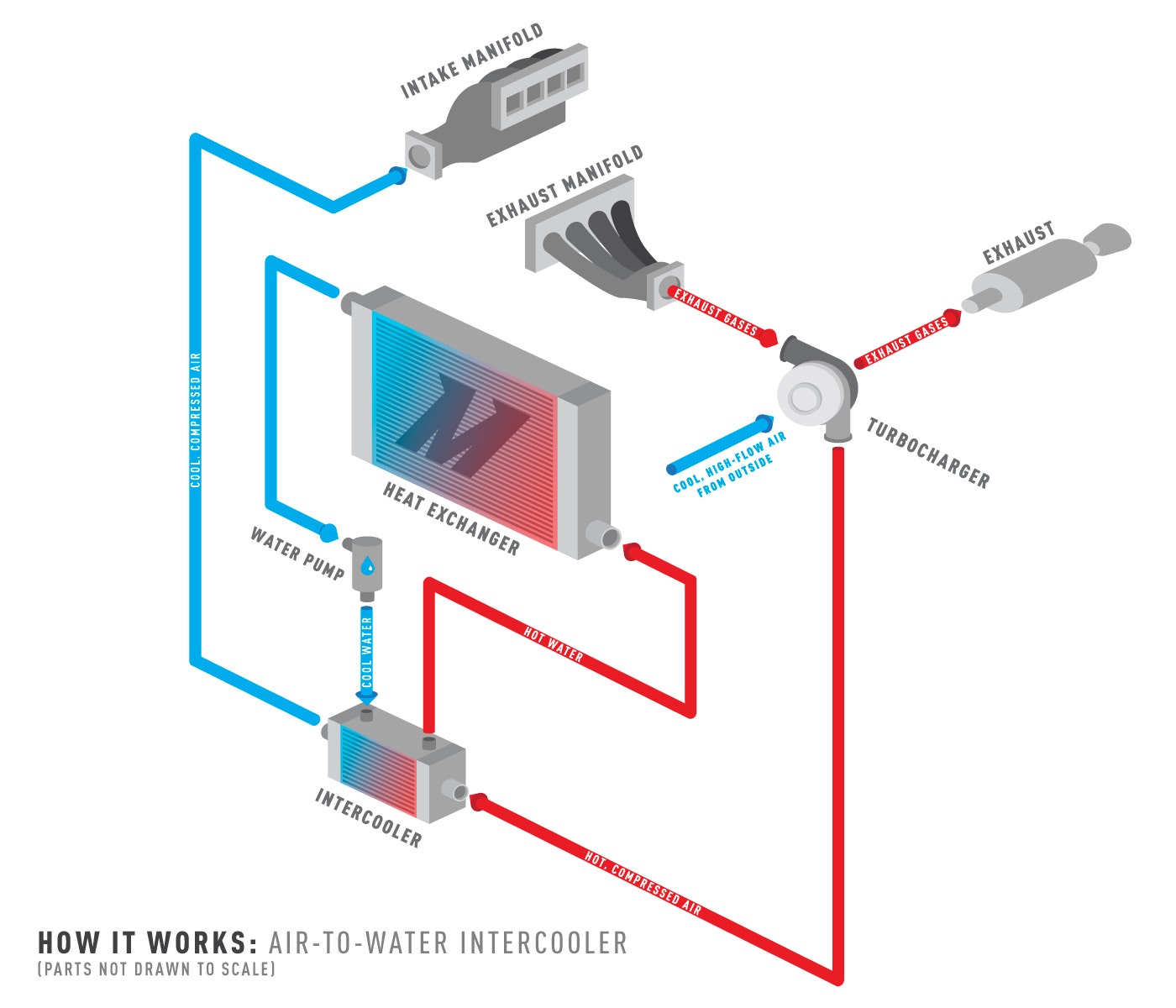
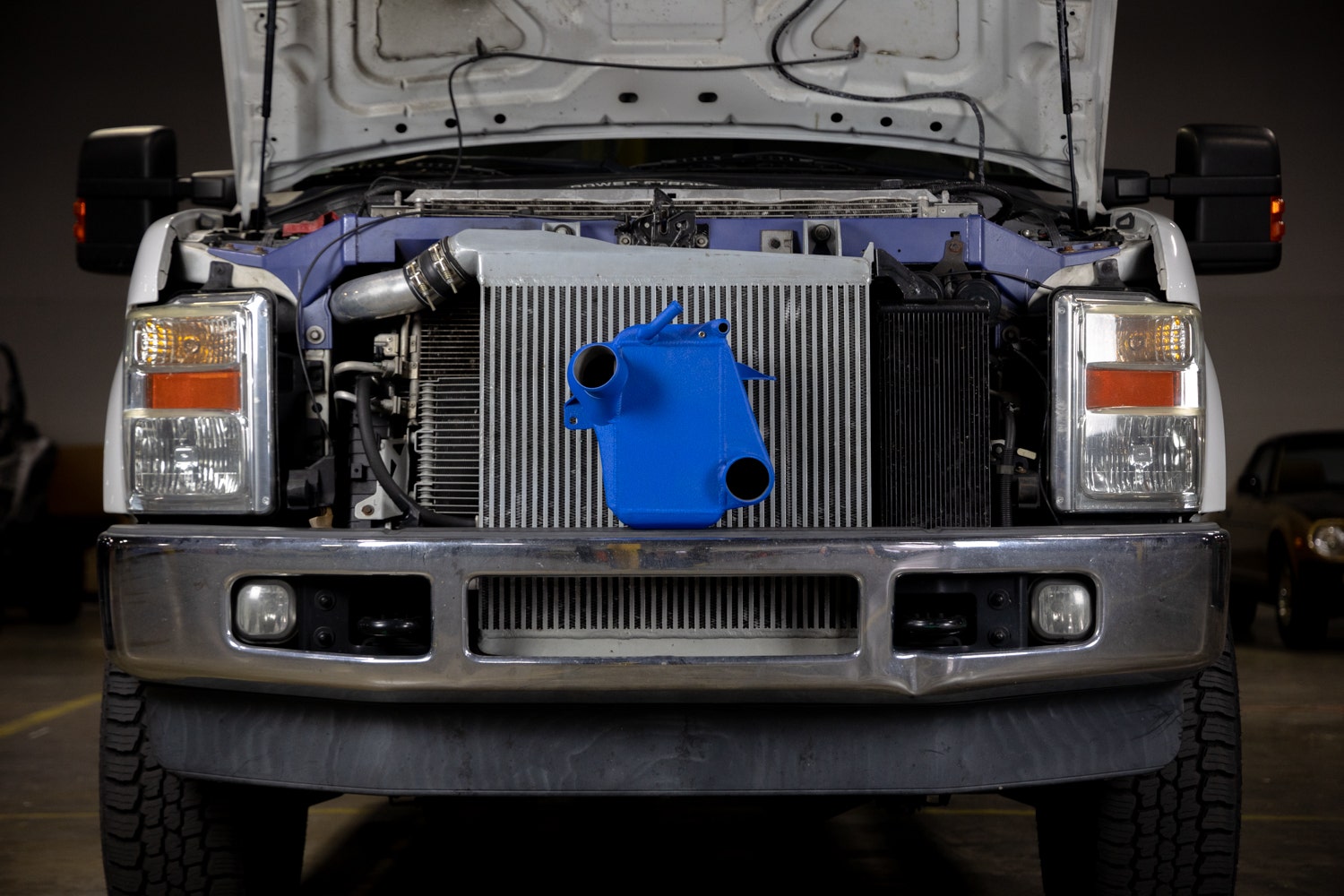
Other than the more compact core size, there are several other reasons that an air-to-water system is more appealing to auto manufacturers and enthusiasts alike. One of the most notable is that the intercooler itself isn't reliant on a fresh air source to facilitate the cooling process. That means your compact intercooler has free range around the engine bay for mounting locations, which is ideal for shortening the distance between the turbo and intake manifold for improved efficiency. In some cases, like BMW's B58 and Jeep's 2.0T Hurricane engines, the intercooler is housed inside the intake manifold, mitigating turbo lag given the system's reduced volume. This method also reduces the number of components needed resulting in generally smaller and more efficient packaging for the vehicle's engine design.
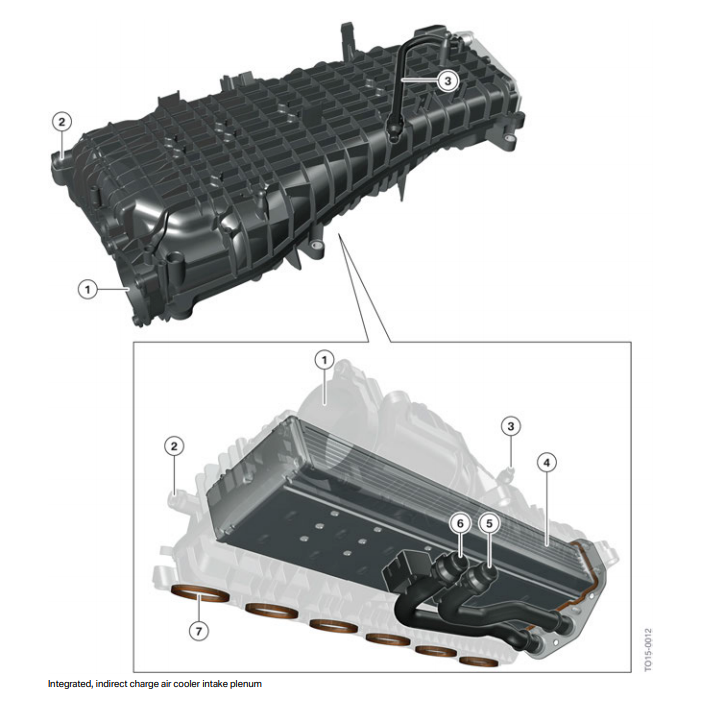
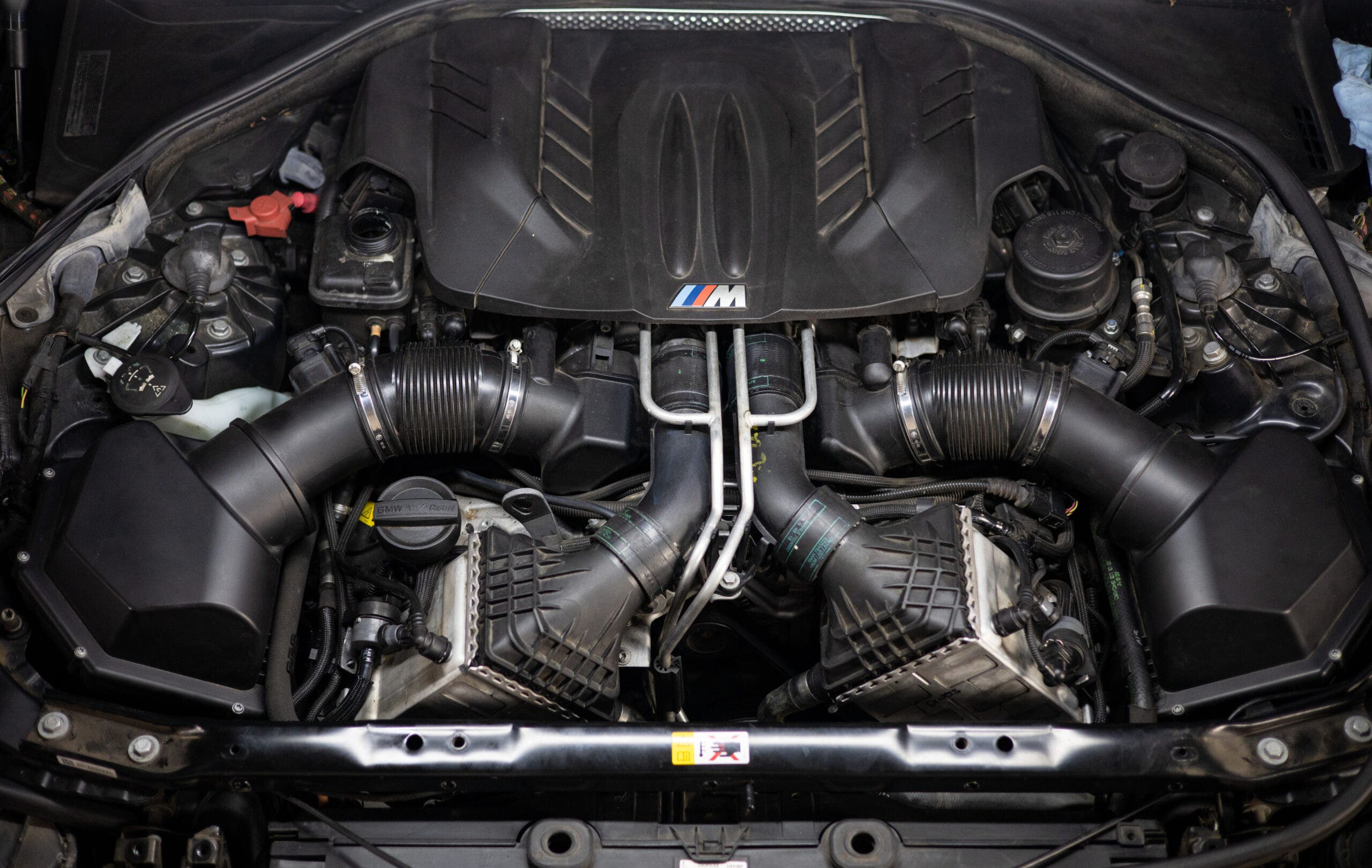
Another upside to an air-to-water system is the constant coolant cycle through the system, which wards off heat soak, even at idle or slow speeds. The coolant still moves through the system, where heat is dissipated by the intercooler heat exchanger located in the vehicle's cooling stack. Like the primary cooling system, the secondary air-to-water intercooling system can depend on the radiator fan at idle and low airflow, making this system ideal for both high-speed track monsters, daily drivers, and rock crawling machines. In some systems, like Infiniti's Q50/Q60, the intercooler's water pump speeds vary depending on engine load to deliver precise cooling for every situation.
The perks don't come without compromise, however. As previously stated, these systems are complex and add an entire secondary cooling system to the vehicle, which means for higher risk components to fail or leak. Upgrading, maintaining, or adding an A2W setup to your vehicle carries a more extensive parts list, so it's not always for the faint of heart or wallet. Generally speaking, as efficient and consistent as these systems are, lowering the coolant temperature down to ambient levels requires more steps and more components, so A2A systems are more advantageous for drivers requiring the lowest temperatures possible.
Air-to-YOU
Deciphering and upgrading your vehicle's OEM intercooling system is a cinch. We have a plethora of direct-fit air-to-air and air-to-water intercoolers, charge pipes, and heat exchangers, but what's the best system when comes to adding forced induction to a previously naturally aspirated engine? Well, we're glad you asked.
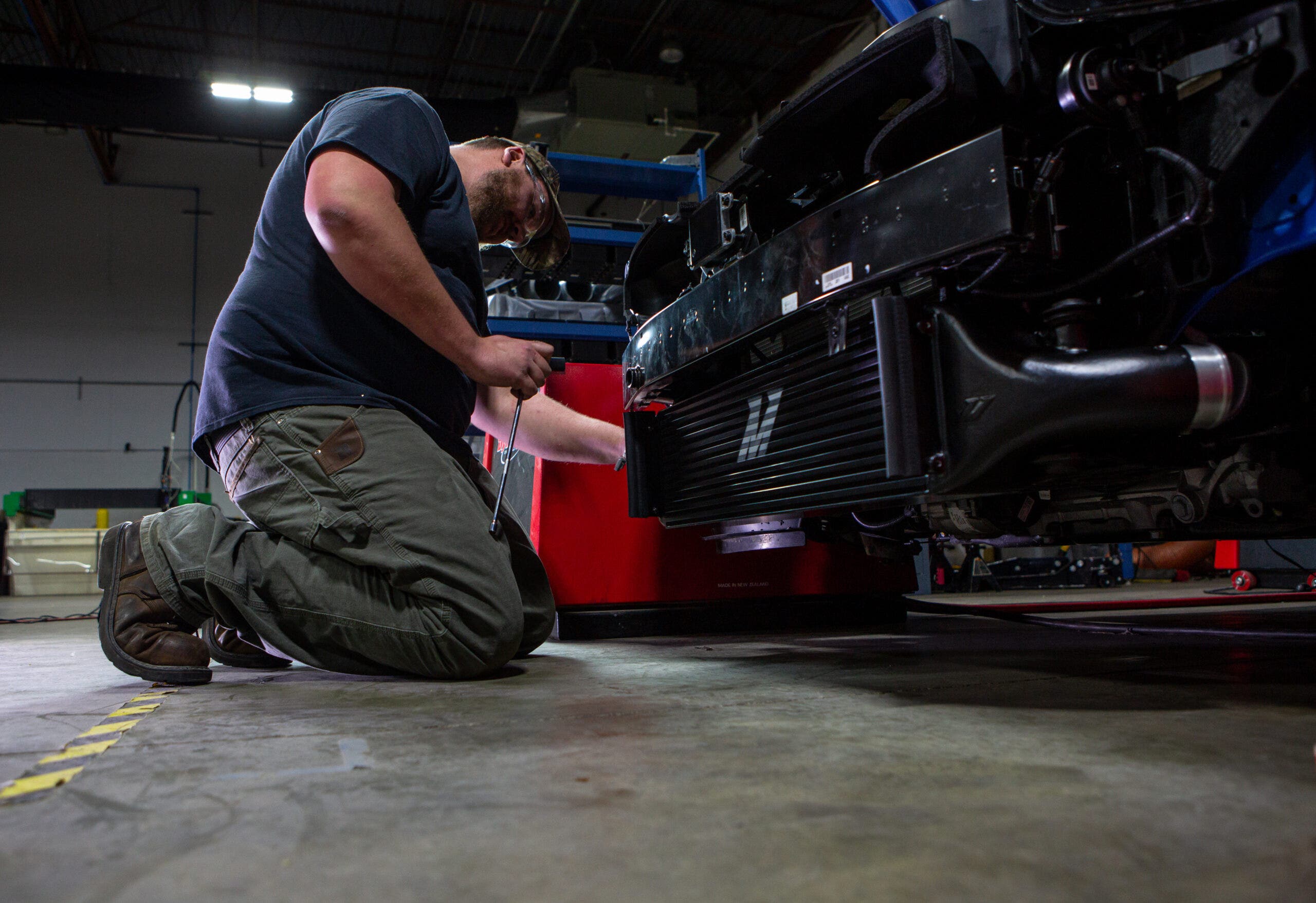
Essentially, it comes down to what you're asking of your vehicle, your budget, and the space you have available. Both methods of intercooling are more than capable of maintaining intake-air temperatures for a wide power range, but the choice comes down to your build preferences. Air-to-air systems are perfect for commutes and canyon carving on a daily driver or just the back road toy. However, for off-roaders, vehicles with tight engine bays, or mid/rear-engined vehicles, an air-to-water intercooler would be better to contend with low airflow and high load.
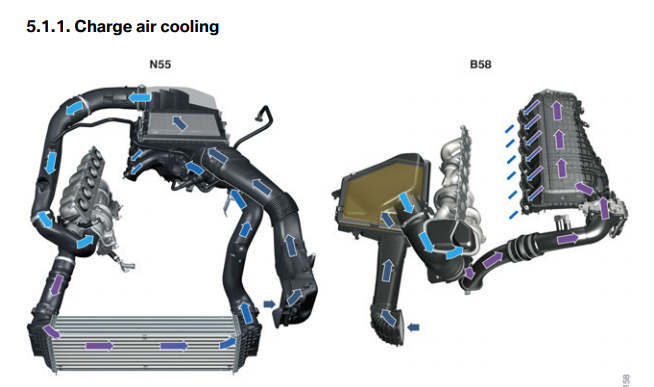
No matter whether you choose an air-to-air or air-to-water setup for your next build, we here at Mishimoto have what you need to chill out your charged air. From complete air-to-air and air-to-water intercooler kits to piping and couplers, all the way to cores for each. Follow the links below or search for your vehicle on our website to find the parts that you need for your build:
Universal Air-to-Air Intercoolers
Universal Air-to-Water Intercoolers
Universal Air-to-Water Heat Exchangers
Universal Intercooler Cores
Universal Intercooler Piping
Universal Silicone Couplers
Forced induction is a hot topic these days, literally. Keeping those intake-air temperatures low is crucial to your engine's performance and power potential. Your intercooler is the key to that potential, whether it uses air or coolant to manage that heat. Knowing the intricacies of each system is ideal for unlocking that potential.
Thanks for Reading!
-Nick




